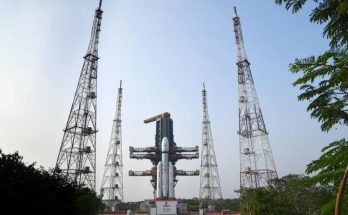NASA astronaut Don Pettit returned to Earth Saturday, accompanied by Roscosmos cosmonauts Alexey Ovchinin and Ivan Vagner, concluding a seven-month science mission aboard the International Space Station.
The trio departed the space station at 5:57 p.m. EDT aboard the Soyuz MS-26 spacecraft before making a safe, parachute-assisted landing at 9:20 p.m. (6:20 a.m. on Sunday, April 20, Kazakhstan time), southeast of Dzhezkazgan, Kazakhstan. Pettit also celebrates his 70th birthday on Sunday, April 20.
Spanning 220 days in space, Pettit and his crewmates orbited the Earth 3,520 times, completing a journey of 93.3 million miles. Pettit, Ovchinin, and Vagner launched and docked to the orbiting laboratory on Sept. 11, 2024.
During his time aboard the space station, Pettit conducted research to enhance in-orbit metal 3D printing capabilities, advance water sanitization technologies, explore plant growth under varying water conditions, and investigate fire behavior in microgravity, all contributing to future space missions. He also used his surroundings aboard station to conduct unique experiments in his spare time and captivate the public with his photography.
This was Pettit’s fourth spaceflight, where he served as a flight engineer for Expeditions 71 and 72. He has logged 590 days in orbit throughout his career. Ovchinin completed his fourth flight, totaling 595 days, and Vagner has earned an overall total of 416 days in space during two spaceflights.
NASA is following its routine postlanding medical checks, the crew will return to the recovery staging area in Karaganda, Kazakhstan. Pettit will then board a NASA plane bound for the agency’s Johnson Space Center in Houston. According to NASA officials at the landing site, Pettit is doing well and in the range of what is expected for him following return to Earth.
For more than two decades, people have lived and worked continuously aboard the International Space Station, advancing scientific knowledge and making research breakthroughs that are not possible on Earth. The station is a critical testbed for NASA to understand and overcome the challenges of long-duration spaceflight and to expand commercial opportunities in low Earth orbit. As commercial companies focus on providing human space transportation services and destinations as part of a strong low Earth orbit economy, NASA is focusing more resources on deep space missions to the Moon as part of Artemis in preparation for future astronaut missions to Mars.




